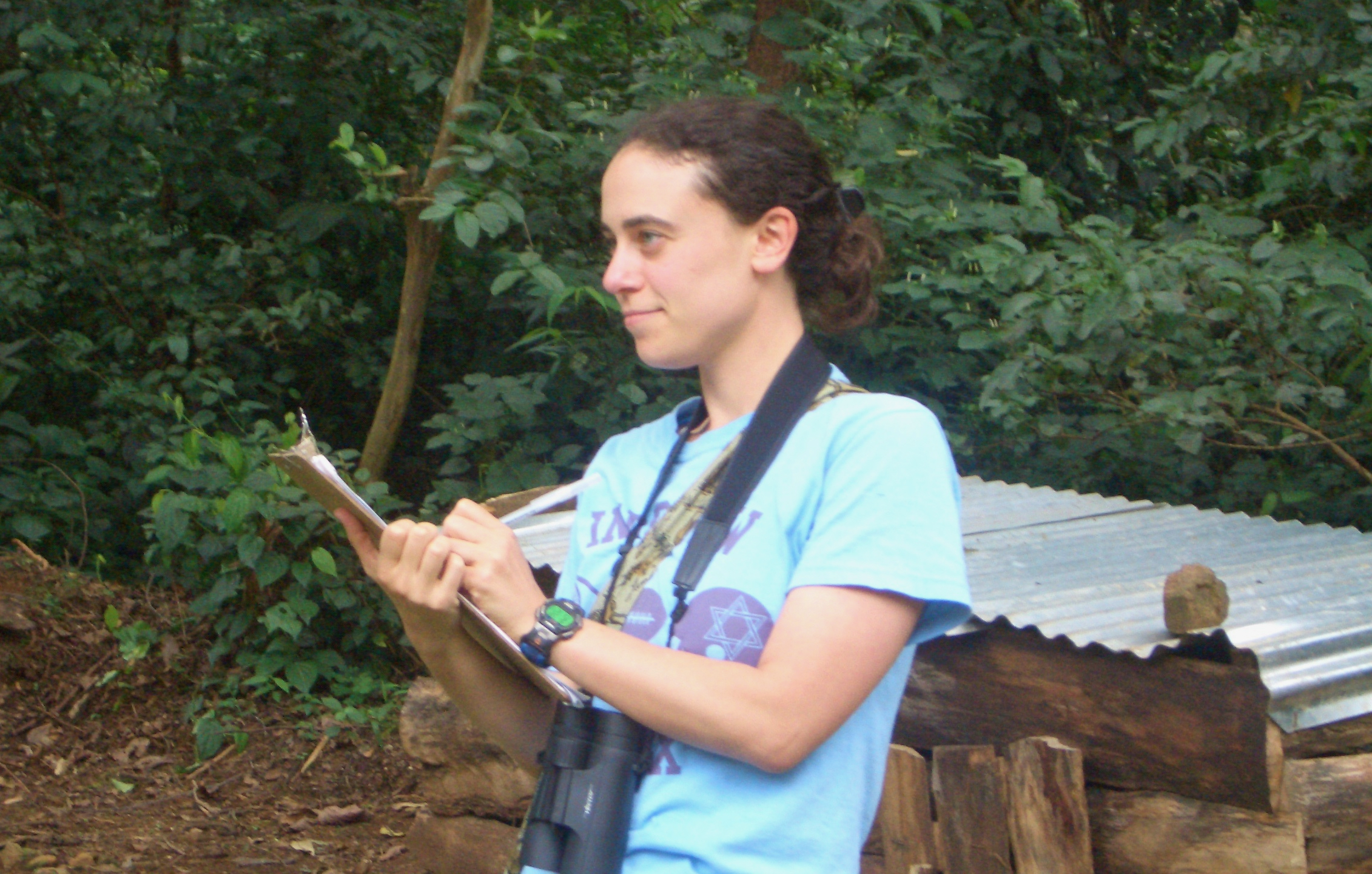Keren Klass
M.A. Conservation Biology, 2010
Dominance and agonism among wild blue monkeys (Cercopithecus mitis stuhlmanni) in the Kakamega Forest, Kenya

Dominance
status is an important social variable influencing individual behavior
and life history in group-living animals. The causes and consequences
of intragroup agonism and dominance relationships are a central focus
of primate socioecology. I examined the dominance relationships and
hierarchy in a forest-dwelling guenon, the blue monkey (Cercopithecus mitis stuhlmanni),
using data from six groups spanning 12 years and 24,996 agonistic
interactions. I also examined methodological questions relating to (i)
similarities in dominance rankings produced with different methods and
(ii) the effect of the percentage of unknown relationships in the
dominance matrix on the stability of the rank output and two
descriptive indices, linearity and steepness. The blue monkey dominance
hierarchy is best described by a combination of the I&SI ordinal
ranking algorithm (de Vries 1995, 1998) and the David‟s score cardinal
ranking method (David 1987). My methodological analyses showed that
matrices with ≥ ~25% unknown relationships lead to inconsistent ranking
results, regardless of the dominance index used. Blue monkeys have
moderately but significantly steep and linear dominance hierarchies,
high directional consistency indices, low rates of agonism, and
relatively high proportions of bidirectional dyadic dominance
relationships. Maternal rank is a central determinant of an individual
female‟s adult rank in the dominance hierarchy, and juveniles mirror
maternal rank closely. There was considerable variation among groups
and over time within the study population in linearity, steepness,
stability of rank and per capita agonism rates. Group size and access
to high value human-derived foods may be partially responsible for this
variation. This study has shown that blue monkeys have moderately
despotic, tolerant and nepotistic dominance hierarchies and are perhaps
best classified according to Sterck et al.‟s (1997) model as
“Resident-Nepotistic-Tolerant.” The relative agreement between
model predictions and the characteristics of blue monkey dominance
hierarchies highlights the likely role of ecology in shaping intragroup
social relationships in this species. Blue monkeys resemble
ecologically similar species in many aspects of their dominance system
but retain a nepotistic structure, which is highly conserved in the
Cercopithecinae. These results can contribute to future studies
examining the central hypotheses and predictions of socioecological
models and to future studies of the role of phylogeny in shaping group
social structure.
After finishing her MA, Keren worked on environmental policy in Israel,
and then joined a PhD program at the University of Toronto.
Publications from Master's research:
- Klass KM, Cords
M. 2011. Effect of unknown relationships on linearity, steepness and
rank ordering of dominance hierarchies: simulation studies based on
data from wild monkeys. Behavioral Processes 88: 167-186.
- Klass K, Cords M. 2015. Agonism and dominance in female blue monkeys. American Journal of Primatology. doi: 10.1002/ajp.22481
